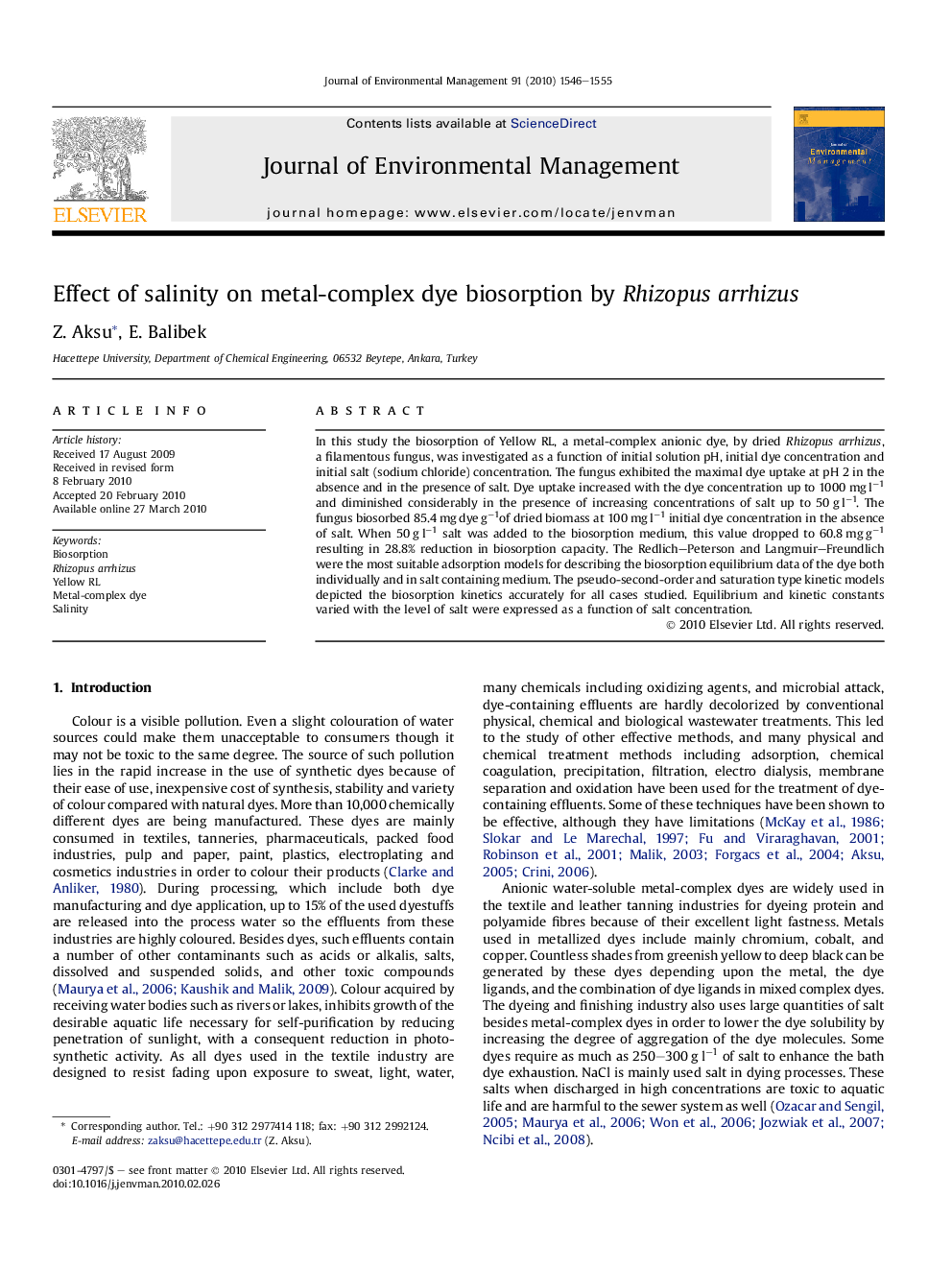| Article ID | Journal | Published Year | Pages | File Type |
|---|---|---|---|---|
| 1057282 | Journal of Environmental Management | 2010 | 10 Pages |
In this study the biosorption of Yellow RL, a metal-complex anionic dye, by dried Rhizopus arrhizus, a filamentous fungus, was investigated as a function of initial solution pH, initial dye concentration and initial salt (sodium chloride) concentration. The fungus exhibited the maximal dye uptake at pH 2 in the absence and in the presence of salt. Dye uptake increased with the dye concentration up to 1000 mg l−1 and diminished considerably in the presence of increasing concentrations of salt up to 50 g l−1. The fungus biosorbed 85.4 mg dye g−1of dried biomass at 100 mg l−1 initial dye concentration in the absence of salt. When 50 g l−1 salt was added to the biosorption medium, this value dropped to 60.8 mg g−1 resulting in 28.8% reduction in biosorption capacity. The Redlich–Peterson and Langmuir–Freundlich were the most suitable adsorption models for describing the biosorption equilibrium data of the dye both individually and in salt containing medium. The pseudo-second-order and saturation type kinetic models depicted the biosorption kinetics accurately for all cases studied. Equilibrium and kinetic constants varied with the level of salt were expressed as a function of salt concentration.
